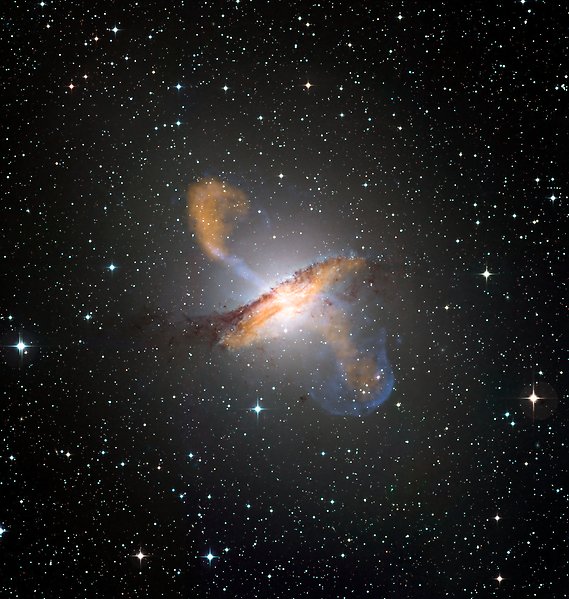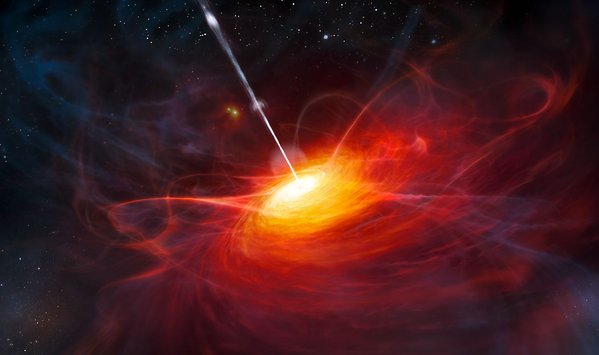Active Galactic Nuclei
Some galaxies emit very intense light from their central regions. The light can be so strong that the total light from all stars in hundreds of Milky Way-sized galaxies together cannot outcompete it in intensity. In the most luminous of these galaxies – the quasars – sometimes the rest of the host galaxy even goes undetected when the strong light from the nucleus outshines the host. This class of galaxies with excessive light from the nuclei is commonly referred to as ‘active galactic nuclei’ – or AGN – and is represented by a wide zoo of galaxies with all kinds of shapes, colours and emitting over the entire wavelength range.

Centaurus A is one of the active galactic nuclei closest to Earth. It emits strong radio emission and produces a relativistic jet. Image: ESO/WFI (Optical); MPIfR/ESO/APEX/A.Weiss et al. (Submillimetre); NASA/CXC/CfA/R.Kraft et al. (X-ray)
The spectral features vary between the different subclasses. A key question is how some of the major subclasses of AGN are interconnected. The AGN Unification theory suggests that viewing angle and dust obscuration plays a dominant role.

An artist impression of the quasar ULAS J1120+0641 Image: ESO/M. Kornmesser
Contacts: Beatriz Villarroel, Andreas Korn
Contact
- Head of Division
- Eric Stempels
